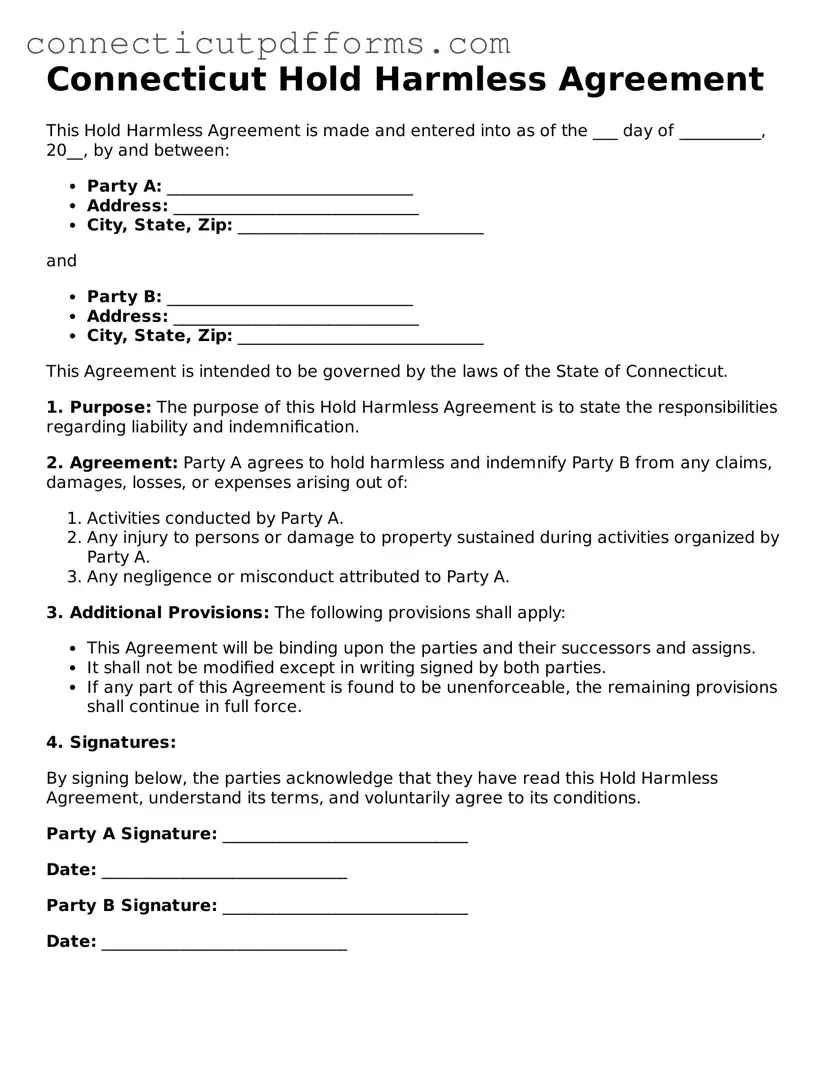Connecticut Hold Harmless Agreement
This Hold Harmless Agreement is made and entered into as of the ___ day of __________, 20__, by and between:
- Party A: ______________________________
- Address: ______________________________
- City, State, Zip: ______________________________
and
- Party B: ______________________________
- Address: ______________________________
- City, State, Zip: ______________________________
This Agreement is intended to be governed by the laws of the State of Connecticut.
1. Purpose: The purpose of this Hold Harmless Agreement is to state the responsibilities regarding liability and indemnification.
2. Agreement: Party A agrees to hold harmless and indemnify Party B from any claims, damages, losses, or expenses arising out of:
- Activities conducted by Party A.
- Any injury to persons or damage to property sustained during activities organized by Party A.
- Any negligence or misconduct attributed to Party A.
3. Additional Provisions: The following provisions shall apply:
- This Agreement will be binding upon the parties and their successors and assigns.
- It shall not be modified except in writing signed by both parties.
- If any part of this Agreement is found to be unenforceable, the remaining provisions shall continue in full force.
4. Signatures:
By signing below, the parties acknowledge that they have read this Hold Harmless Agreement, understand its terms, and voluntarily agree to its conditions.
Party A Signature: ______________________________
Date: ______________________________
Party B Signature: ______________________________
Date: ______________________________
